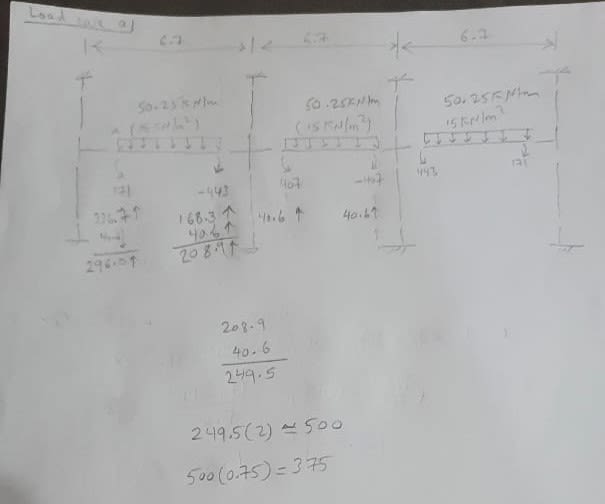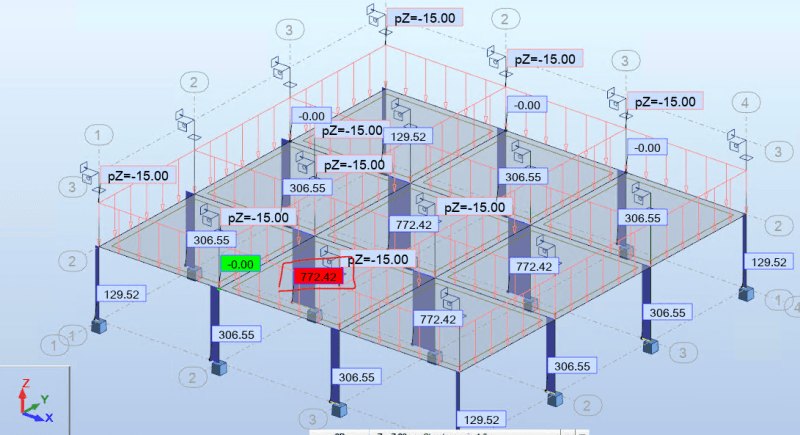Hi all,
I tried to find out column axial load for Example 13.3 in Nilson's Design of Concrete Structures textbook, SI units, 14th so I can compare it with Autodesk Robot Structural Analysis.
Please find attached link:

Robot results 335.71kN
My hand calculation results: 375kN
Is it comparable? Is my hand calculation correct?
I tried to find out column axial load for Example 13.3 in Nilson's Design of Concrete Structures textbook, SI units, 14th so I can compare it with Autodesk Robot Structural Analysis.
Please find attached link:

Robot results 335.71kN
My hand calculation results: 375kN
Is it comparable? Is my hand calculation correct?







